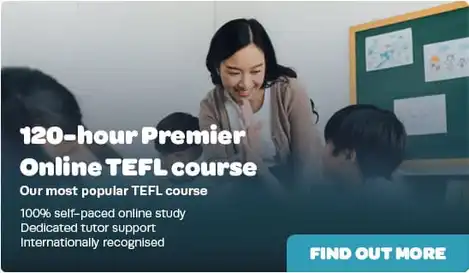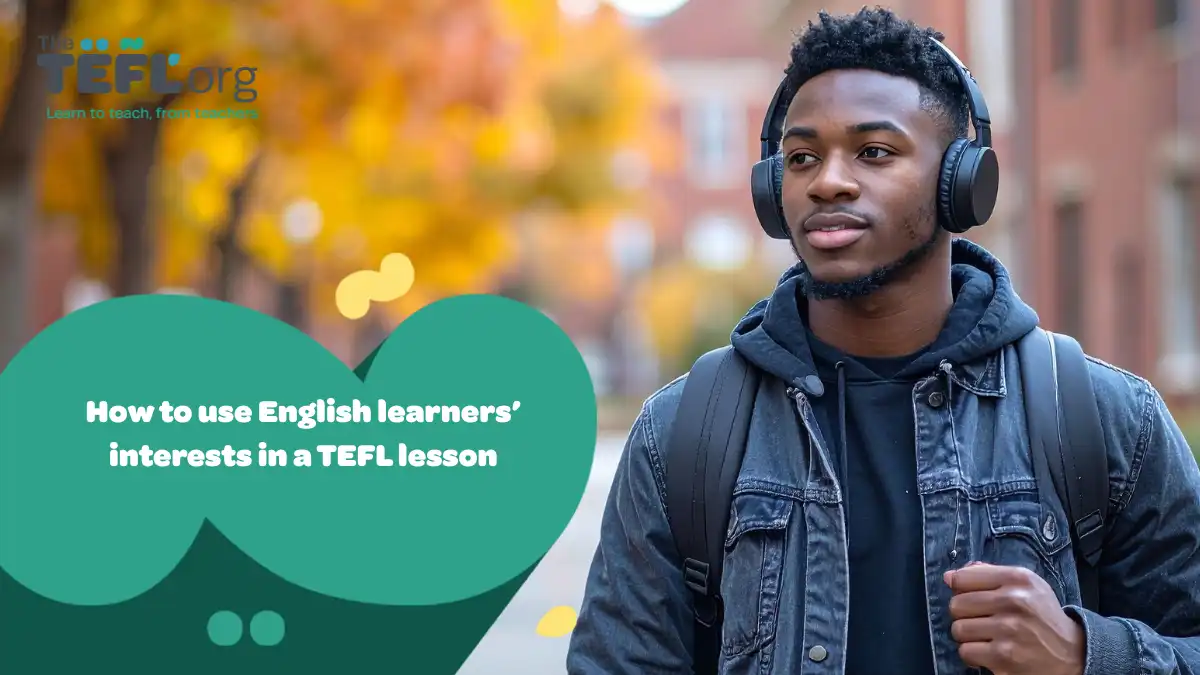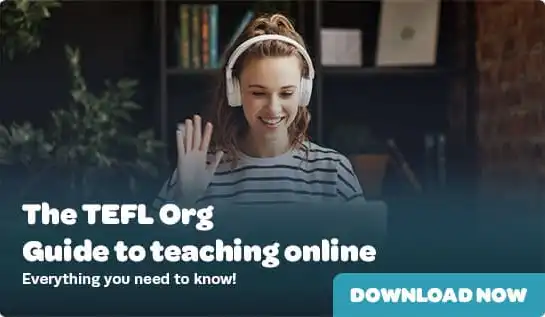- TEFL Courses TEFL Courses
- View all TEFL courses
- 120-hour Premier Online TEFL Course
- 200-hour Level-5 Online TEFL Course
- Online TEFL Courses
- Classroom TEFL Courses
- Combined TEFL Courses
- Virtual TEFL Courses
- TEFL Course Bundles NEW
- Advanced TEFL Courses
- TEFL Lesson Plans & Resources
- TEFL Gift Vouchers
- Which TEFL course is right for you?

- New to TEFL New to TEFL
- Locations
- TEFL Jobs
- Teach Abroad Teach Abroad
- Teach English Abroad
- Teach English in Japan
- Teach English in South Korea
- Teach English in Spain
- Teach English in China
- TEFL Salaries Abroad
- Requirements for teaching abroad
- Teach English abroad without a degree
- How to find teaching jobs abroad without experience
- Can you teach English abroad as a non-native speaker?

- Teach Online
- About Us
- Blog
- Podcast

How to use English learners’ interests in a TEFL lesson
Teaching English is deeply rewarding, but engaging every learner can be a real challenge. Lesson plans - especially for large groups - can become repetitive, and some students will struggle to see how English connects to their lives. That’s why finding out what your students are interested in is so important.
When students learn content that matches their interests, they’re far more likely to study in their own time, through listening to music, reading articles about specific topics, or watching films in English outside the classroom. It’s perfect for learners who are more reluctant to participate in class, especially in class discussions, and it’s also ideal for building deeper connections with the English language and retaining vocabulary. By linking lessons to interests, you make English more “real” - students can use it to talk about the things that matter most to them.
In this post, we’ll examine why learning about your students matters and how you can bring their interests into your TEFL lessons.

Motivated TEFL students are successful English learners
Showing interest in your learners builds rapport and respect, encouraging them to care about English. Motivated students learn languages far more effectively .
For teachers, using outside interests can make for energetic classes. You can start by designing tasks like writing an interview with a pop star or producing a fact file on a country. This kind of task-based learning has proven creative benefits for learners and varies the type of language used.
It’s not just in the classroom - you can set homework that students actually want to do. Ask music fans to write an album review in English, or a fashion enthusiast to summarise a new collection.
When learners engage with English through their hobbies, they’ll learn more grammar and phrases, because the language feels more relevant to them, and find more value from lessons. For example, art students learning English will want to talk about historic movements, and need to learn the past tense. Using interests encourages self-directed study and increased participation.

How to identify your students’ interests in the TEFL classroom
How do you find out what your students like or dislike? Here are some tips:
- Ask questions : If you teach one-to-one, you can ask students what motivates them to learn . You can also write a questionnaire on Google Forms or a similar platform to learn more.
- Polls : Quick straw polls are perfect for quickly learning about your students. For example, if music festival season is approaching, ask your students if they’re interested in festivals or concerts. You could write a list of 10-15 international destinations, and let students vote for their favourite. Or, try asking your students who will win an upcoming sporting event, like a World Cup or Olympics.
- Ice-breakers : Ice-breaker exercises can be as easy as doing a timed ball game, where students throw a ball to each other, and the student holding the ball has to say what they did over the weekend.
- Observation : Set up conversations between learners about their weekly schedules. Listen without overcorrecting grammar or pronunciation issues so you can note what students care about and how they spend their time outside the classroom.
- Chats : Informal chats with students are also great for this. Use prompts like a concert ticket, a football scarf, a news article or a film poster.
Tip : Use cultural sensitivity to ensure you’re not causing any issues: sport, politics, and even music can mean different things to different groups of people!

Using music in the TEFL classroom
Using music in the TEFL classroom is an absolute goldmine. Songs, lyrics and music videos are ready-made English learning materials; you’ll never run out of ideas.
Artists sing in various styles, with different accents, deliveries, and rhyme schemes, and hearing these differences can help language learners. Our podcast guest, Lachesis Braick , now a talented teacher and translator, learned English through a love of the Backstreet Boys.Music stays with people. Your students will have emotional bonds to certain songs and artists and will want to discuss their favourite artists, allowing you to build lessons about grammar, punctuation, and other key skills.
How teachers can use music: an example
- A song for the week : Ask your students to suggest songs, and create lesson plans around the most popular pick. Not everyone will agree, but that’s a bonus - it can encourage respectful discussions about styles of music.
- Lyrical analysis : Analyse the song’s lyrics, noting vocabulary, flow, slang, and message. Ask your students whether there are any phrases they don’t recognise and discuss them.
- Critical essays and rewrites : You can ask your students to analyse lyrics through tasks like essays, or a creative exercise like rewriting or adding another verse.
- Videos : Through videos, your class can discuss the visuals, the time period, culture, and fashion, incorporating different interests.
Music and TEFL: benefits for learners
Attaching language lessons to music is a proven way to boost language retention. It’s why nursery rhymes are vital for young learners, and the alphabet is sung - once you’ve learned it, it’s impossible to forget.Music also exposes learners to specific cultures and English that they’re unlikely to find in textbooks. Lyrics can often be idiomatic or introduce new words and phrases that end up in the dictionary!

Sport and English learning
Just like music, sport is one of society’s great levellers. It’s full of action, debate, and clear outcomes, perfect for English learning. From the results of a football match to snowboarding rules, there’s so much you can use.
Sports also build cultural awareness. Students can compare attitudes to sport worldwide, study historical context, and learn the history of significant events or rivalries, such as cricket in Pakistan and India or Spain’s El Clásico derby . It’s never “just a game”; there’s so much that teachers and language learners can use.
How teachers can use sport in the TEFL classroom
Through sport, you can approach learning areas like:
- Using numbers (long-distance running events, event times)
- Making comparisons (tactics, histories, etc.)
- Using statistics (data-backed predictions, match stats)
- Grammar in context (“If we win”, “it’s not the performance we had hoped for”)
Here are some lesson plan ideas to get your sporty lessons moving:
- Clips : Show English-language clips of sporting events, ask students to take notes, and then discuss what they’ve just watched. This exposes them to new phrases and voices and encourages them to speak in English about a new topic.
- Writing tasks : students can write headlines, discuss a big match or event, or even write an opinion piece about their favourite team or athlete.
- Photo study : Photography, posters, and other images can inspire conversations about history, clothes and culture.
- Role-play exercises: Mock interviews and press conferences are fun, practical tasks for students. You can also set projects where students write guides or presentations about sporting events or news stories.
Sport and TEFL: benefits for learners
Teaching students to debate and give opinions on their favourite athletes or teams boosts fluency and confidence and allows them to connect with more people. If you have athletes in your class, you can encourage them to speak passionately about their training, while sports fans can talk about their favourite teams.
That emotional connection improves retention and motivates them to learn more phrases they can use with fellow sports fans, building confidence and study skills.

Geography, travel and the English language
Language connects different cultures and inspires learners to be curious about the wider world. It’s one of the primary motivations for learning English , especially among adults eager to explore different parts of the globe.
“Geography” covers various topics, from landscapes, cultures, and climates to learning areas like global warming, map reading, and capital cities. With such a wide scope, there’s plenty to use in your lesson plans. Setting tasks can be as direct as asking a young learner to talk about today’s weather or as challenging as organising a debate around ecological issues with advanced students.
How teachers can use geography and travel: some examples
- Maps and photos : Use images to design a class about the names and locations of different countries.
- Media : Mixed media can increase cultural understanding and appreciation for diversity. Try mixing up classes with travel diaries, blogs, documentaries, and podcasts .
- Guest speakers : Guests of various nationalities, religions, or backgrounds can make lessons more authentic.
- Virtual field trips : Students can research countries and destinations, and write travel itineraries.
- Lectures and debates : Geography-related topics like climate change and nature conservation can inspire debates and discussions. Topics include “Should we stop driving cars?” and “How can schools reduce their carbon footprint?”
Geography, travel and TEFL: benefits for learners
Learning English for geography and travel can encourage creativity, curiosity, and empathy. Many students want to learn English to confidently talk to strangers, ask for directions, order food, and navigate the world, so real-life, authentic lessons are key.
English is the dominant language in global media: more than half of the world’s social media and online content is in English. Providing basic vocabulary is a launchpad for students to do their own research, read from various sources, and learn more.

Create an environment where students love English
The more engaged you are with your learners’ hobbies and interests, the more motivated your learners will be. Shared passions and creative pursuits help people connect and strike up conversations.
TEFL lessons about sports, music, geography, and other passions are ideal for building learners’ confidence and teaching core grammar subjects, such as tenses, prepositions, and passive/active English. A fashion enthusiast is more likely to engage with and understand tenses when discussing a favourite designer than when studying a topic that feels irrelevant. Interest-centred lessons make English real and practical, rather than academic.
Designing lessons around students' interests isn’t always easy - it takes a lot of research and creativity to get it right - but the effort sharpens your teaching and makes you more relatable. When you create the conditions for students to be genuinely interested in English, you’ll have excited, inspired learners working inside and outside the classroom.
Do you have a passion for the English language? Are you eager to share it with the world? Take a 120-hour Premier Online TEFL course , and start your journey today.










